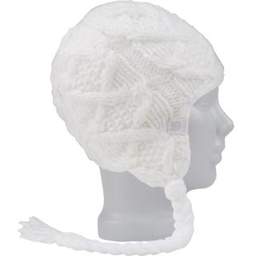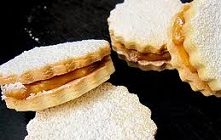Winter temperatures in the Andes Mountains are extremely cold and natives of the area developed headgear designed to protect the head, nape and ears from frostbite. The Peruvian earflap beanie hat has a helmet like shape with earflaps attached to st
The traditional Peruvian hat is made from alpaca yarn. The alpaca is a llama like creature native to the Andes with a thick, long fibered coat. Natives harvested the alpaca’s coat much the way Europeans harvested wool from sheep. It was carded and spun to create yarn which was knitted into hats and woven into blankets. Alpaca is about four time warmer than wool and has greater durability making it the ideal material for earflap beanies. The single drawback of alpaca yarn is that it lacks elasticity even in knitted items so hats must be properly sized. Alpaca are now raised for their coats in both Peru and the United States and the yarn is still used to make the traditional head wear of Peru. The designs on hats made in Peru feature bright colors and geometric patterns and reflect art of the Inca tribes that once dominated the area.
Imitation Peruvian H
The practical design of the Peruvian batseanie has been imitated by manufacturers. The helmet shaped hat with its distinctive earflaps is sold at ski resorts world wide. Most Peruvian beanies on the market are not made from alpaca yarn and are manufactured in Europe, Canada, Asia and the United States. These imitation Peruvian beanies are usually made from wool or synthetic fibers and feature Scandinavian and European designs. Alpaca yarn is not as readily available outside Peru and it is far more expensive than wool and synthetic fibers. While these hats have a similar appearance, the patterns are usually less intricate and they lack the warmth of real Peruvian earflap hats.
Making a Peruvian Beanie
Alpaca yarn is available at knitting speciality shops worldwide and it is possible to find knitting patterns for Peruvian style earflap beanies. Wool or synthetic yarns can be substituted for alpaca in most patterns. There are free knitting patterns for this style of hat, but they usually don’t have native designs. Some patterns feature North American native designs but it is difficult to find patterns with authentic Peruvian designs. Those who don’t knit or who want to see an authentic design can find a few internet sites that sell earflap beanies imported from Peru.
In most cases the earflap beanies imported from Peru are hand knitted using high quality alpaca yarn. Peruvian women knit these traditional beanies and sell them to provide necessities for their families. As with most hand crafted items these hats are not inexpensive, but they are durable and will last for years with proper care.





